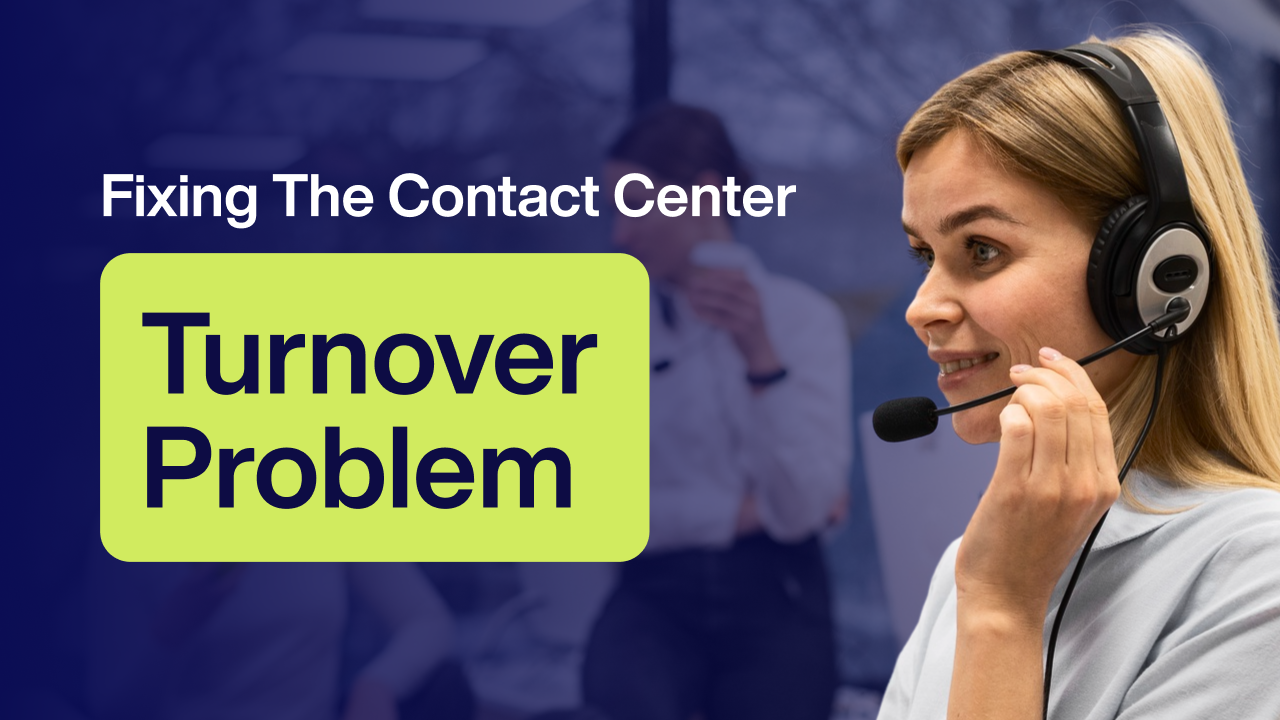Strengthening Core Service Line ROI by Scaling Behavioral Health and Dental via Telehealth

Introduction
As the healthcare landscape shifts and Medicaid funding remains flat, Federally Qualified Health Centers (FQHCs) face an urgent question: How can we do more without more?
With rising demand in behavioral health and dental services—and limited provider availability—many clinics are operating at capacity or beyond. But there’s a silver lining: telehealth, combined with AI-powered tools, offers a powerful way to scale these services without overextending your workforce or budget.
By streamlining workflows, expanding access, and reducing operational friction, clinics can deliver high-quality care virtually while strengthening ROI. In this article, we’ll break down how strategic use of AI and telehealth can transform behavioral and dental care delivery—while staying aligned with Medicaid’s evolving priorities.
AI as a Force Multiplier in Telehealth
Automating Patient Intake and Eligibility Checks
One of the biggest bottlenecks in telehealth? The front end of the visit—forms, eligibility, and scheduling. AI helps automate this entire process.
Reducing Administrative Overhead
Tools like Ribbon Health and Notable Health use AI to:
- Verify Medicaid eligibility in real time
- Pre-fill patient data from past visits
- Surface copay and coverage details instantly
This removes 20–30 minutes of manual admin work per patient and frees up your team to focus on clinical tasks.
AI-Powered Clinical Decision Support
Enhancing Diagnostic Accuracy in Behavioral Health
AI is particularly valuable in behavioral health, where diagnosis can be subjective. Platforms like Ginger and Quartet Health use AI to:
- Analyze speech and text patterns
- Flag symptoms of anxiety, depression, or mood disorders
- Recommend treatment plans based on patient-reported data
Clinicians then validate and personalize these recommendations. It’s not about replacing therapists—it’s about equipping them to do more, with greater accuracy.
Workflow Optimization for Scalable Telehealth
Smart Scheduling and Visit Routing
Matching Patients to the Right Clinician in Real Time
AI-based scheduling tools consider:
- Provider availability
- Clinical needs
- Patient preferences (language, gender, etc.)
This dynamic matching improves both care quality and patient satisfaction—and helps fill calendars more efficiently. Some systems can even predict cancellations and backfill those slots in minutes.
Asynchronous Visit Models and Remote Monitoring
Expanding Access Without Overloading Staff
Behavioral health check-ins, dental screenings, and post-op follow-ups can be done asynchronously:
- Patients answer guided questions or submit photos/videos
- AI screens the input and prioritizes urgent cases
- Providers respond in batches, on their schedule
This model allows providers to manage 2–3x more cases in the same time—boosting ROI without burning out staff.
Real-World Examples of Success
Case Study: Rural FQHC Scaling Behavioral Health via Teletherapy
Location: Southern Arizona
Problem: 9-month waitlist for therapy, limited psychiatric staff
Solution: Introduced AI-assisted triage and teletherapy platform
Results:
- Reduced wait time from 9 months to 3 weeks
- 3x more therapy sessions delivered monthly
- $500K/year savings in admin overhead
- Patient satisfaction jumped from 72% to 92%
Conclusion
With no new Medicaid dollars on the horizon, FQHCs and safety-net clinics must innovate to stay afloat—and scaling behavioral health and dental services through telehealth is a strategic move that pays off.
By integrating AI into core workflows, automating repetitive tasks, and designing smarter care delivery models, providers can increase access, reduce costs, and enhance patient satisfaction. Telehealth isn’t a side gig anymore—it’s a core clinical strategy.
Ready to future-proof your core service lines? The tools are here. The demand is rising. Now’s the time to act.
👉 Take the next step—evaluate your telehealth workflow and start scaling smart today.
FAQs
1. Can telehealth really scale dental services?
Yes. While hands-on procedures require in-person care, screenings, consults, education, and post-op reviews can all be done virtually—freeing up chair time for high-value services.
2. What role does AI play in behavioral health?
AI assists in screening, monitoring, and clinical decision support, helping therapists manage caseloads more efficiently while improving diagnostic accuracy.
3. How do you measure ROI from telehealth?
Track metrics like visit volume, no-show rates, clinician productivity, revenue per visit, and patient satisfaction scores to calculate both financial and operational ROI.
4. Is patient satisfaction higher with virtual care?
Yes. Studies show that patients appreciate the convenience, shorter wait times, and privacy of telehealth—especially for mental health services.
5. How fast can a clinic implement telehealth effectively?
With the right tools and training, clinics can launch basic telehealth services within 4–6 weeks, with full integration taking 3–6 months.

No Spam —
Just Good Stuff.
Join our newsletter for actionable advice, insider knowledge, and strategies that drive real results.
No fluff, just value.
.png)
%20(1).png)
From The Blog
Read All Articles
Hybrid AI Voice Bots: Better CX, Happier Agents, and Smarter Schedules

Hybrid AI in Banking: Handling Complex Service Without Losing the Human Touch

Hybrid AI for Financial Services: Solving Complex Service Without Losing the Human Touch

How Hybrid AI Reduces Patient No-Shows and Scheduler Burnout

Hybrid AI That Actually Moves the Needle in Healthcare RCM

How AI-Human Collaboration Elevates Quality Assurance on the Factory Floor

Why Nearshore Hybrid BPOs Outperform Offshore Automation Centers

How Hybrid AI Voice Bots Elevate CX and Make Agents Unstoppable

AI‑Human Hybrid Support That Elevates Fraud Detection and Compliance

How Hybrid AI Streamlines Healthcare Revenue Cycle—Without Losing the Human Touch

AI-human hybrid quality assurance for supply chain accuracy

Why Nearshore Hybrid BPOs Outperform Offshore Automation Centers

AI + Human QA on the Line: How Hybrid Teams Raise Manufacturing Quality

Why Nearshore Hybrid BPOs Outperform Offshore Automation Centers

How AI-Human Collaboration Elevates Quality Assurance in Modern Manufacturing

Hybrid AI That Keeps Schedules Full: Reducing Patient No‑Shows and Burnout

Why Nearshore Hybrid BPOs Outperform Offshore Automation Centers

Hybrid AI That Quietly Fixes Healthcare RCM—Starting With the Schedule

How AI-Human Collaboration Raises the Bar on Manufacturing Quality Assurance

How Hybrid AI Tackles the Toughest Banking Service Moments

AI + Human QA: How Hybrid Teams Catch Defects Early and Strengthen Audits

How Hybrid AI Cuts Churn in Telecom and Retail—Without Losing the Human Touch

Hybrid AI for Financial Services: Faster Resolution, Stronger Compliance, Human-Centered Support

Hybrid AI That Fills Schedules and Eases Burnout: Reducing Patient No-Shows in Healthcare

Hybrid AI-human support that strengthens fraud detection and compliance—without breaking customer trust

AI + Humans: Elevating Quality Assurance on the Factory Floor

AI-human hybrid quality assurance for supply chain accuracy

Hybrid AI That Keeps Schedules Full—and Clinicians Fresh

AI-Human Hybrid Support: Stronger Fraud Detection and Compliance at the Contact Center

Why Nearshore Hybrid BPOs Outperform Offshore Automation Centers

From Empty Slots to Full Days: Hybrid AI Scheduling That Reduces Burnout

From No‑Shows to Full Days: Hybrid AI That Fixes Provider Schedules Without Burning Out Staff

From Empty Slots to Full Schedules: Hybrid AI That Boosts Access and Reduces Burnout

Stop the Scheduling Spiral: Hybrid AI That Fills Schedules Without Burning Out Providers

Stop Empty Slots from Fueling Burnout: Hybrid AI-Human Scheduling for Health Systems

From Empty Slots to Full Days: Hybrid AI Scheduling for Health Systems

From Hold Music to Full Schedules: Hybrid AI That Lifts Provider Productivity Without Burning Out Staff

Stop the Scheduling Whiplash: Hybrid AI That Fills Last‑Minute Openings Without Burning Out Your Staff
.png)
Stop the Scheduling Spiral: How Hybrid AI Keeps Providers Productive and Patients Seen
.png)
AI & Financial Services: Where Compliance Meets Conversation

E-commerce's Hybrid AI Advantages: From Order Status to Complicated Returns
.png)
Customer Service & Experience East 2025 (Reuters Events)
.png)
NACHC’s Workforce Conference (formerly FOM/IT)
.png)
Healthcare's AI-Human Sweet Spot: When Empathy Meets Efficiency
.png)
Choosing the Right Contact Center Technology Stack for Your Industry
.png)
Order Management Support: Where AI Excels & Where It Fails
.png)
Customer Success vs. Customer Support: When to Use AI vs. Human Touch

687% Increase in Referral Processing in 6 Months: How One Healthcare Organization Turned Its Patient Support Around

5 Warning Signs Your Medical Referral Process Needs Immediate Attention

AI‑Powered Healthcare Contact Centers: What CX Leaders Need to Know

AI‑Powered Healthcare Contact Centers: What You Need to Know

Healthcare Contact Centers: What Others Are Just Diagnosing, EGS Has Already Solved

Real-Life Use Cases of Contact Center Automation for Cost Reduction

5 Proven Use Cases of Contact Center Automation That Cut Costs by Up to 30%

How Leading Companies Are Reducing Support Costs and Boosting Customer Satisfaction with AI

Real-Life Use Cases of Contact Center Automation for Cost Reduction

Unlocking Efficiency, Speed, and Patient Satisfaction through AI

How Healthcare Leaders Can Leverage AI to Transform Customer Experience (CX)

FQHC-Led Medicaid ACO Innovation: How Illinois is Reinventing Community Care through Value-Based Models

Expanding Access to Mental Health: How Telebehavioral Health Is Transforming Care in Frontier Idaho

Idaho’s Medicaid Expansion: Fueling Growth and Stability in Community Health Centers






















.png)


.png)
.png)
.png)
.png)
.png)
.png)
.png)
.png)
.png)
.png)



